Water beetles as pets in the home aquarium
If you’ve embarked on a collecting trip in the freshwaters of the world, you’ve likely encountered aquatic beetles. Or perhaps you’ve been so fascinated by the fish you found that the beetles clinging to your net went unnoticed. While often overlooked, beetles and the many other insects found in freshwaters are vital components to natural systems and food for many of the fish we adore in home aquaria.
Beetles – the order Coleoptera – are the most diverse order of organisms on Earth, with around 400,000 described species. While a measly three percent of beetle species are aquatic, this still leaves 13,500 species, making them the most diverse group of animals in freshwaters, with about 1,000 more species than freshwater fish (Balian et al. 2008).
Aquatic beetles are found in the waters of every continent except Antarctica, and they don’t form a single clade – the evolution of aquatic lifestyles from terrestrial ancestors occurred at least ten times in beetles (Hunt et al. 2007). This means that there is an incredible diversity in morphologies, lifecycles, and functional roles among beetles. Most beetle species are much smaller than fish we usually keep – some beetles barely reach 2 mm in total length – but there are quite a few species that range from 1.5 to 5 cm long that can make interesting inhabitants of the home aquarium.
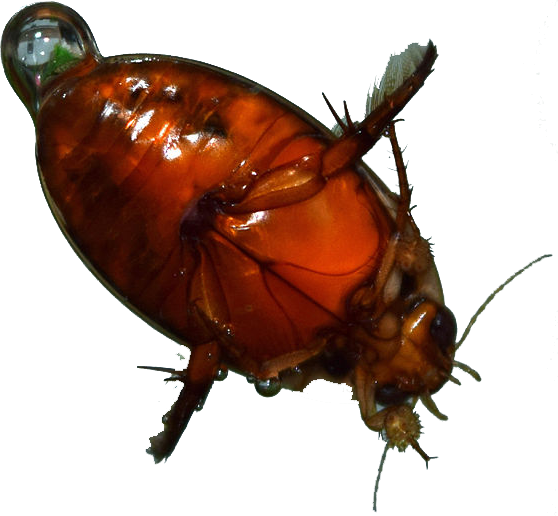
Lifecycle and flight
Beetles have complex life cycles and undergo complete metamorphosis. They start life as an egg before hatching as a larva and then transitioning as a pupa before becoming an adult. In many species both the larvae and adults are aquatic, but pupation always occurs on land, making it difficult to both breed beetles and keep one individual for its entire lifecycle.
In this article I’m going to focus on keeping adults in the aquarium, but it is also possible to keep larvae, although I wouldn’t recommend keeping larvae and adults together. Larvae can be highly aggressive to each other and cannibalistic. Larvae of some taxa are often called “water tigers” because of their voraciousness and menacing appearance.
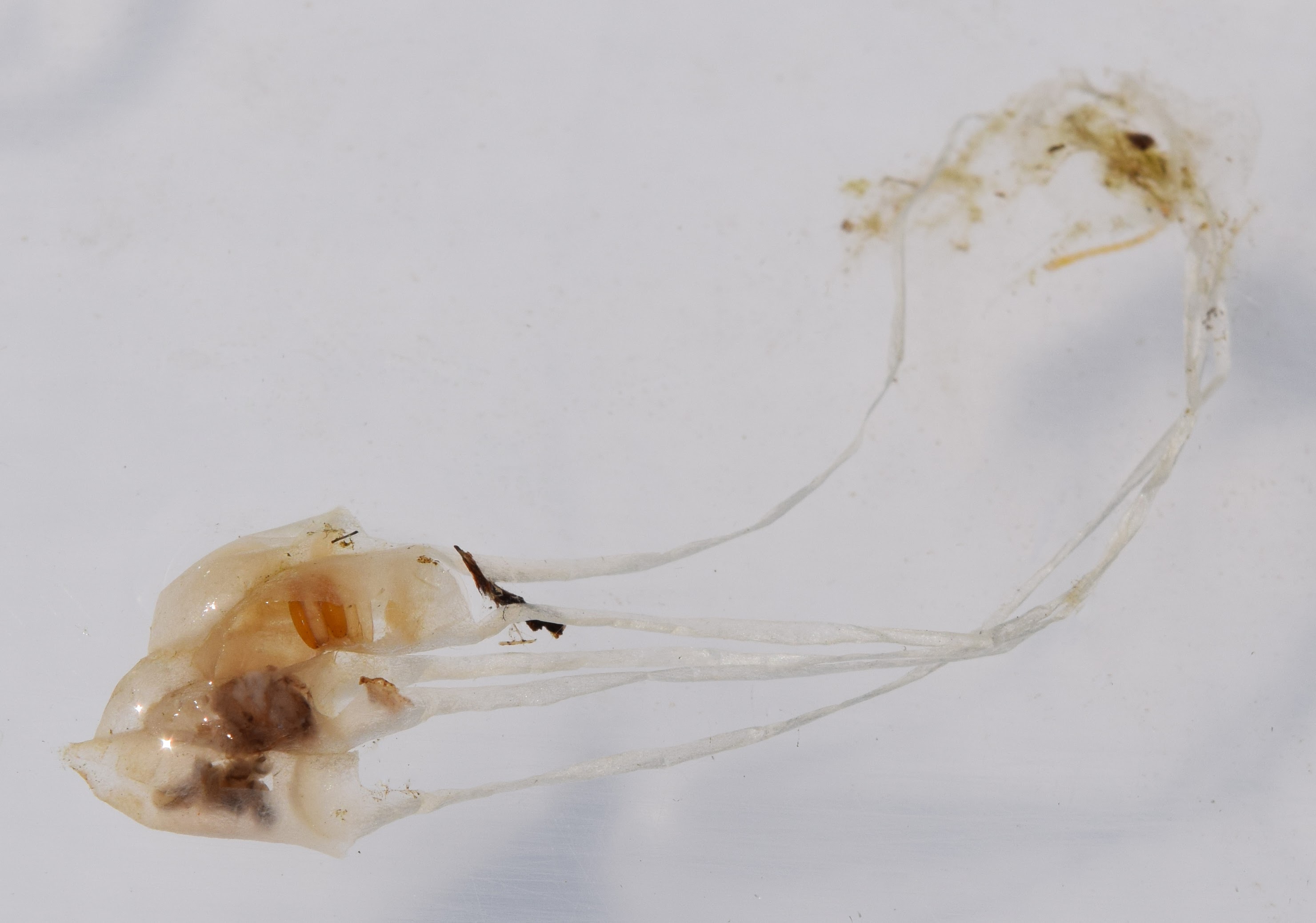
Once beetles complete pupation, the adults fly across the landscape in search of a new home. In many species flight is a temporary ability, since after they colonize a new habitat they use up their wing muscles to obtain extra energy for reproduction. Although some species are often able to fly throughout their adult lives, all of the species I’ve kept have some capabilities that enable them to climb out of the water up the sides of aquariums, particularly along the silicone seams.
If you’re going to keep beetles, I strongly suggest that you have a relatively tight-fitting lid or screen. It doesn’t need to be as secure as you would have for an octopus, but something that minimizes any gaps is usually sufficient. It also helps to keep the water level a few inches below the top of the aquarium. I’ve found that dytiscids and gyrinids are much more content in aquariums than hydrophilids, but nevertheless it is a good idea to keep them all with a lid.
Even if you prevent escape, adult beetles have fairly limited lifespans. Some smaller species may survive for only a few weeks, whereas some larger taxa like Cybister can be kept for nearly a year. In many taxa their entire lifecycle will be completed within one year, sometimes with multiple generations in one year.
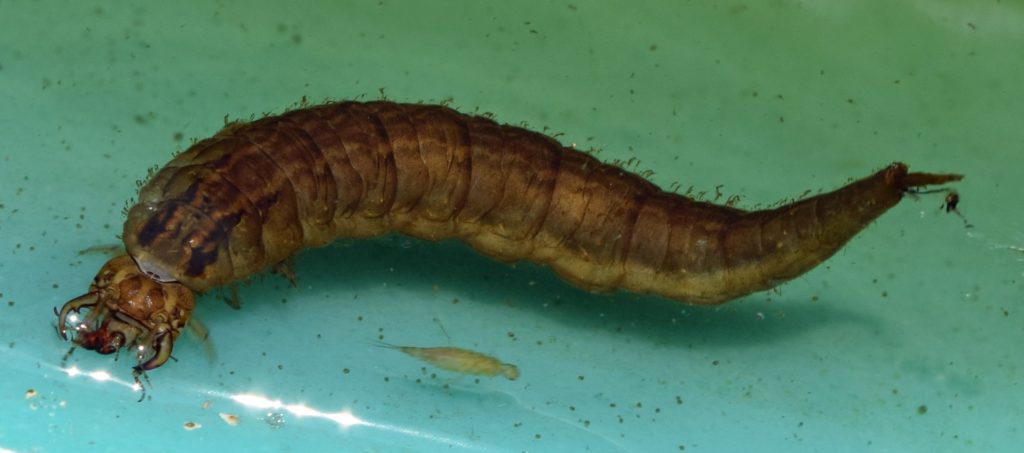
Beetle-fish interactions
If you’re reading this article wondering how you can incorporate beetles into your existing fish tank, I have bad news for you. I strongly suggest that beetles and fish not be kept together in the same aquarium. Fish are predators of beetles and readily consume larvae. Although the hard exoskeletons of adult beetles make them more difficult targets than larvae, bigger fish can certainly eat adult beetles.
Fish also produce chemical cues, and beetles can infer from these cues that there is a predator in the aquarium. Even if the fish are quite small, the cues they produce can be strong signals that there is a risk to the beetles, so beetles will often try to escape. On the other hand, the largest predaceous diving beetles will catch and eat live fish!
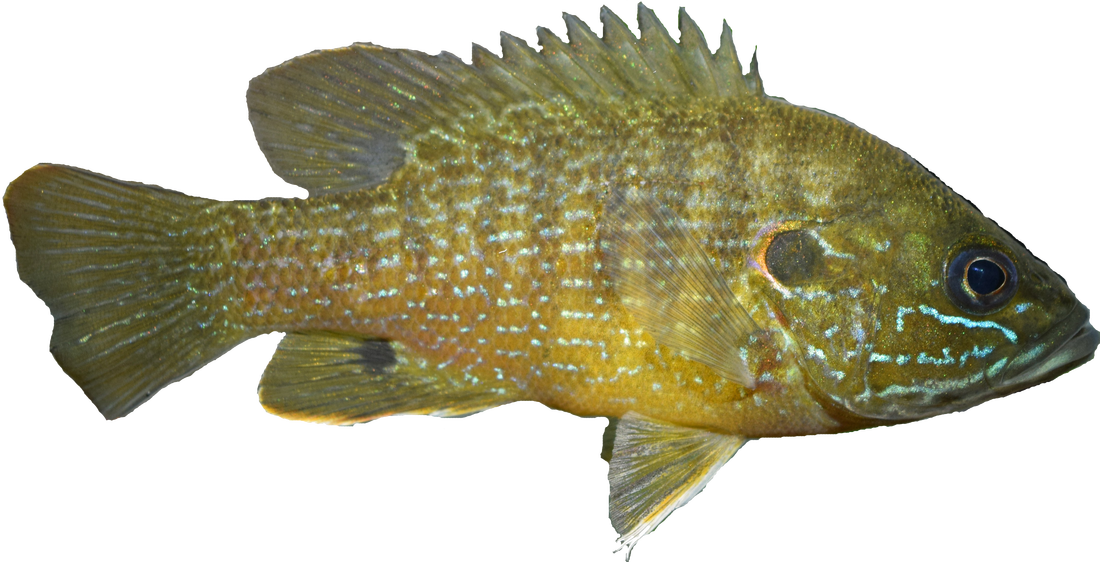
Aquarium setup
Beetles do well in almost any aquarium setup, but, in addition to a tight-fitting lid, there are a few guidelines to maximize conditions for them. Most beetles will do well in any size aquarium, including nano tanks, but unless you have a lot of beetles, there’s no need to give them 100+ gallons of space. Filtration is not necessary, and beetles generally do better without it since they often feed on plankton and other matter removed by filters. Including a filter that creates only a gentle current can help keep your aquarium clean while not harming beetles.
You also generally have no need for a heater or chiller – room temperature is best. Beetles can survive in poor conditions that fish cannot survive in, including excessive heat and cold. I have collected beetles from ponds covered in ice and ponds with water temperatures over 100 degrees Fahrenheit.
Any substrates or decorations that you would traditionally use in freshwater aquariums are fine for beetles. I haven’t had any issues with live plants, although I haven’t kept beetles in meticulously planted aquariums. There is one thing I would say is required for keeping beetles: floating plants (artificial or live) or something that reaches close to the water’s surface. Beetles like to hang out near the surface and spend their time resting in these floating plants. Most beetles are air breathers and need to return to the surface to replenish their air supplies. For smaller beetles that are not great swimmers, like some hydrophilids, the journey from the bottom of an aquarium to the surface can be quite far. The more complex the environment, the better.
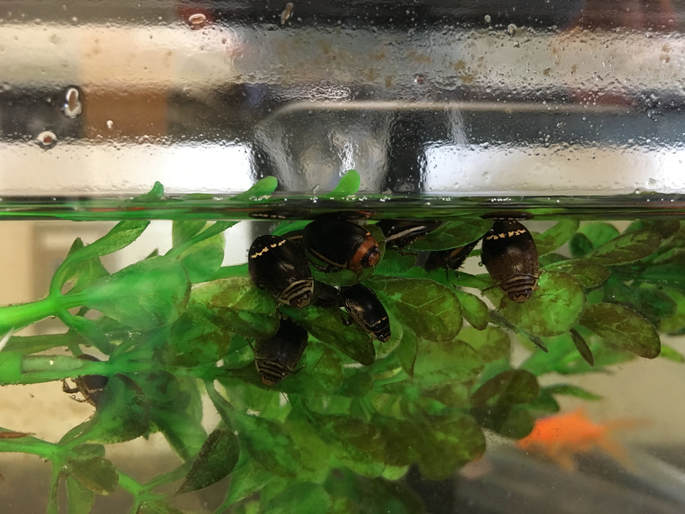
Collecting
Aquatic beetles can be caught in just about any freshwater habitat, including ponds, rivers, puddles, tree holes, and elsewhere. I generally find that it is easiest to collect moderate-sized beetles using fine mesh nets along pond margins, particularly where there is a lot of vegetation. Summer is also usually the best time of year, especially late summer if ponds are drying up and concentrating more beetles into smaller areas. However, you can generally find beetles at any time of the year, although this varies based on where you live. Ponds without fish would also be a better place to start than ponds with fish.
The largest predaceous diving beetles are most easily captured with baited minnow traps, but be sure to keep part of the trap above the water so that beetles can breathe. If they can breathe, they will drown in the traps. Black light traps are commonly used by entomologists and work well for collecting some beetles, but aren’t required. As when collecting any wild organisms, make sure you have the correct permits to do so. Occasionally I’ve seen live aquatic beetles for sale online, so you may be able to find them at specialty retailers.
Identification
Identification of adult beetles for many species is impossible without preservation, a microscope, and a lot of experience. Using free online keys, you should be able to get a reasonable idea of which families and genera you collect for larger taxa without preserving them. This of course takes practice, and some are much easier than others to identify. John Epler’s “The Water Beetles of Florida” is an excellent free key for all families and genera in North America, but only goes to the species level for Florida (Epler 2010).
If you have access to a low power microscope, have a look at some beetles. You’ll probably be fascinated by their complex morphology, which can be difficult to see with the naked eye. If you really want to know which species you have, you could preserve them in 70% ethanol or pin them and send them to an expert for help.
Dytiscidae
I’ve found dytiscids (the predaceous diving beetles) to be the easiest, most active, and most enjoyable beetles to keep. They are the most diverse family of beetles, with about 5000 species worldwide, and they are very competent swimmers. To breathe underwater, dytiscids carry air bubbles attached to their posterior end. Most dytiscids do well on a diet of bloodworms, but this can be supplemented with brine shrimp, small pieces of meat (fish, chicken, shrimp), or even fish flakes after enough acclimation. Live food, including any other kinds of insect larvae, are good treats too! As for all beetles, they don’t need to be fed every day, and three times a week is usually sufficient.
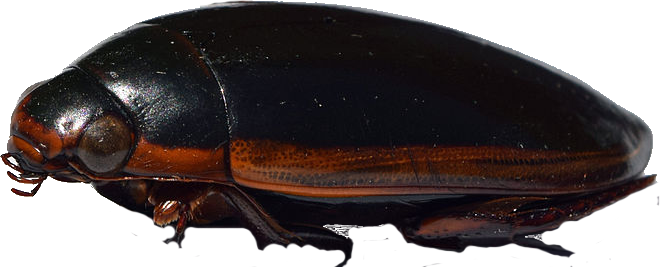
There is a diverse group moderately-sized dytiscids that are around 1–3 cm in length that do very well together and I think make an interesting group to keep in an aquarium. This includes the genera Acilius, Agabus, Hydaticus, Graphoderus, Rhantus, and Thermonectus, among others in North America, and there are other similarly-sized dytiscid genera around the world. Some of these species are brilliantly colored – Thermonectus marmoratus (known as the sunburst diving beetle) so much so that it’s often found in zoos and public aquariums.
In North America there are two genera of giant predaceous diving beetles: Cybister (up to 5 cm long) and Dytiscus (up to 4 cm). Both of these genera should be kept alone in an aquarium as they typically kill all other smaller beetles, and I’ve had Cybister kill Dytiscus. Both of these genera eat small live fish and terrorize and physically harm larger fish. I had a Cybister fimbriolatus that I managed to keep in an aquarium with a 30-cm long grass pickerel (Esox americanus). This lasted for eight months until one morning I found that the building’s heating system had stopped functioning, and excessively high temperatures stressed the pickerel to the point that the beetle killed it!
Both Cybister and Dytiscus make fascinating aquarium denizens, and I have rarely seen any inclination by them to escape. Interestingly, it is very easy to distinguish between the sexes in Dytiscus as females have parallel grooves running down their elytra (back or top surface), whereas males have smooth elytra.
Hydrophilidae
Hydrophilids (the water scavenger beetles) are omnivores that move around in a motion that is more akin to crawling on substrates and surfaces than it is swimming, as dytiscids do. Hydrophilidae is a common family, with over 2300 species worldwide and sizes ranging from less than 2 mm to over 40 mm.
Tropisternus is a genus of moderately-sized hydrophilids (up to about 1.3 cm) that are fairly common in North America and easy to identify to species. Hydrochara and Hydrobiomorpha are slightly larger (up to 2 cm) and a little more difficult to identify to species. Hydrophilus is the largest genus of hydrophilids and among the largest of all aquatic beetles, reaching lengths up to 4 cm. With the exception of a couple Tropisternus species, the coloration of all of the species in these genera is mostly solid black.
I’ve had no issues keeping hydrophilids with each other or with the moderate or small dytiscids and gyrinids. However, feeding hydrophilids is a little more difficult than dytiscids. The best success I’ve had has come when I’ve allowed small amounts of algae to grow in my aquariums, which I’ve supplemented with dried algae, fish flakes, and frozen foods, particularly bloodworms. Hydrophilids are also the best climbers and seem to be the most interested in escaping.
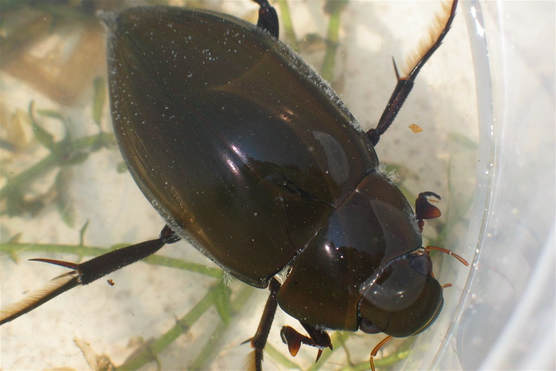
Gyrinidae
Gyrinids (the whirligig beetles) are those beetles that you’ve probably seen scurrying in groups across the surface of a pond. Morphologically, they’re quite different from hydrophilids and dytiscids – they’re adapted to life on the water surface, but they are adept at swimming below the water’s surface too. Their eyes are divided into upper and lower halves, allowing them to simultaneously have unobstructed views of both above and below the water surface.
There are about 1000 species in the family Gyrinidae, and in North America the genus Dineutus contains the largest species, with individuals of some species reaching up to 1.6 cm in length. If you keep these in an aquarium, I would suggest maintaining the water about half to three quarters full so that you’re easily able to see them swim on the surface. If you do so, don’t use a disruptive filter, as they prefer calm water surfaces. They will feed on bloodworms and brine shrimp, and occasionally fish flakes too.
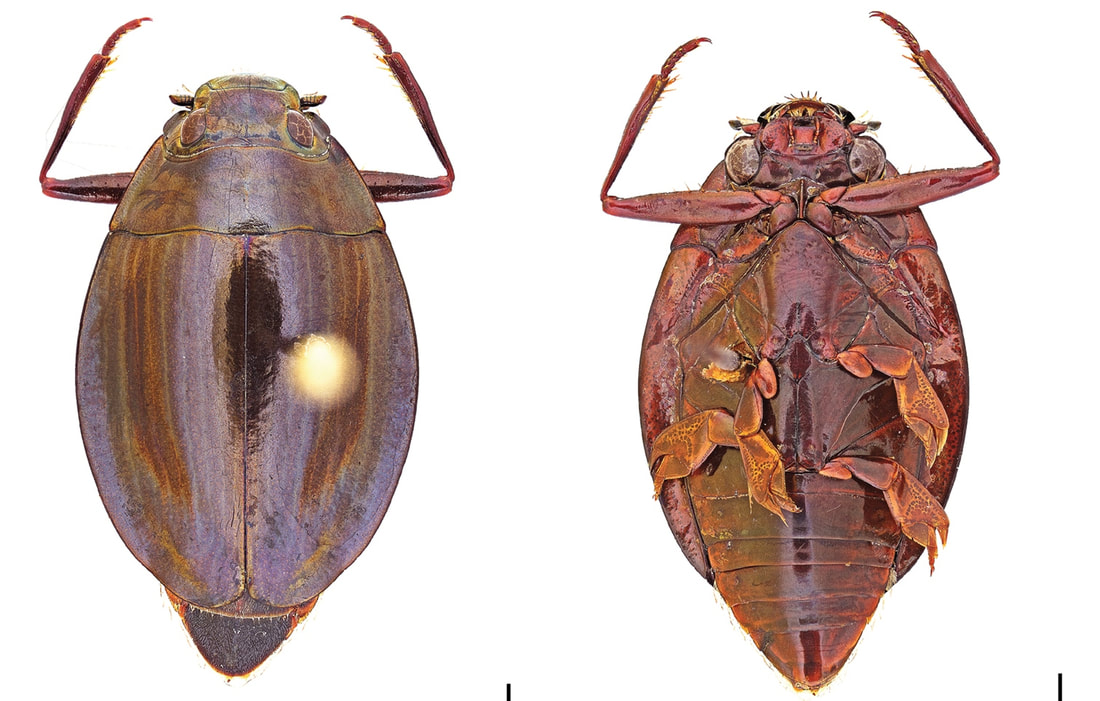
Other families
There are over 30 families of beetles with species that are aquatic for at least one part of their lives. In North America, commonly encountered families include Elmidae, Haliplidae, Helophoridae, and Hydrochidae, but the majority of these other species are less than 1 cm long and probably of little interest to the aquarist. Worldwide, the family Hydraenidae is the second most speciose family with over 2,500 species, but most of these are found in the tropics, and they barely reach 2 mm in total length.
Beetles are probably animals most aquarists have never thought of keeping. When we think of invertebrates in home aquariums, we almost always think of marine invertebrates. The diversity of freshwater invertebrates is vast, and while most of these are short-lived insects, some of them, particularly beetles, can be a fascinating part of the home aquarium.
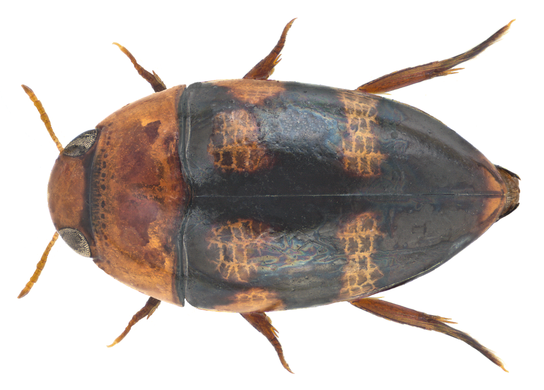
References
Balian, E. V., H. Segers, C. Lévèque, and K. Martens. 2008. The Freshwater Animal Diversity Assessment: An overview of the results. Hydrobiologia 595:627–637.
Epler, J. H. 2010. The water beetles of Florida. Florida Department of Environmental Protection, Tallahassee, Florida.
Hunt, T., J. Bergsten, Z. Levkanicova, A. Papadopoulou, O. S. John, R. Wild, P. M. Hammond, D. Ahrens, M. Balke, M. S. Caterino, J. Gómez-Zurita, I. Ribera, T. G. Barraclough, M. Bocakova, L. Bocak, and A. P. Vogler. 2007. A comprehensive phylogeny of beetles reveals the evolutionary origins of a superradiation. Science 318:1913–1916.
Jäch, M. A., and M. Balke. 2008. Global diversity of water beetles (Coleoptera) in freshwater. Hydrobiologia 595:419–442.